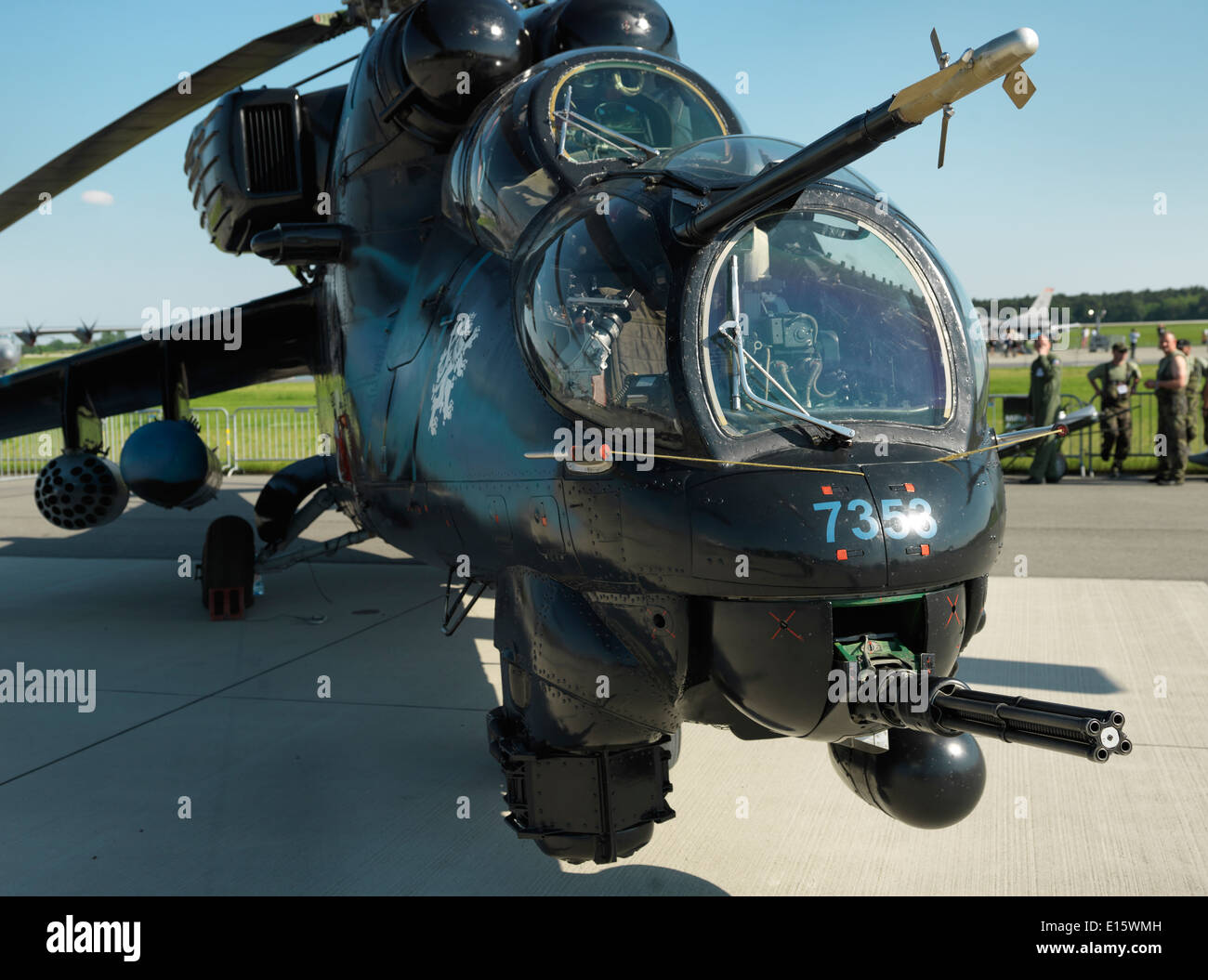

The aircraft were regularly detached to forward helipads in order to provide quick-reaction protection for radar sites located near the border between East Germany and West Germany. June 1978 saw the Mi-24 first introduced into the East German Air Force & Air Defence Force (Luftstreitkräfte und Luftverteidigung der Deutschen Demokratischen Republik), with an initial delivery of four aircraft. Czechoslovakian Hinds would have been at the forefront of any NATO/Warsaw Pact conflict. Given Czechoslovakia’s proximity to the ‘border’ with NATO the Czech Air Force repeatedly received new aircraft and better variants of the Hind and the Plzen-Bory airfield became a front-line aerodrome for Hind operations.

The Czechoslovakian Air Force (Ceskoslovenske Vojenske Létectvo) ordered a number of Hinds in 1978 as part of a modernisation programme. The three main roles for Bulgaria’s Hinds were in providing close-air support for ground troops, (effectively operating as ‘flying artillery’), anti-armour operations and battlefield air defence against slow-speed aircraft and helicopters. The first Mi-24s, four Mi-24Ds, entered service with the Bulgarian Air Force (Bulgarski Voennovazdushni Sili) in June 1979 and the type remained in service throughout the Cold War and beyond.


 0 kommentar(er)
0 kommentar(er)
